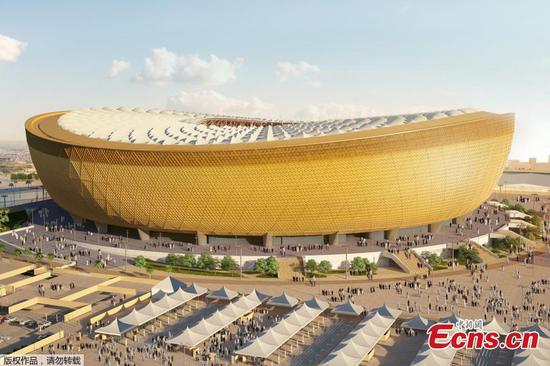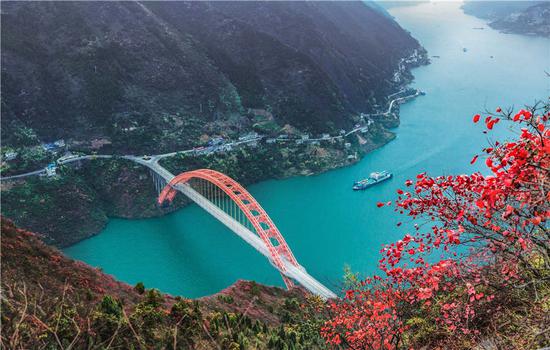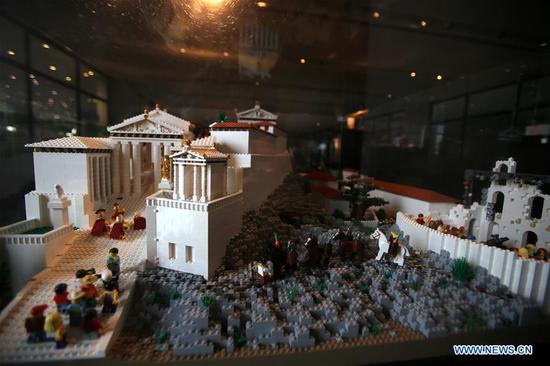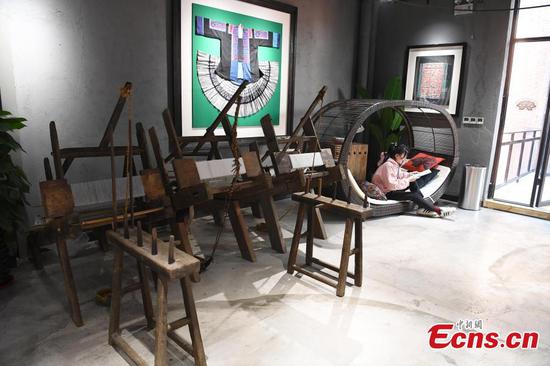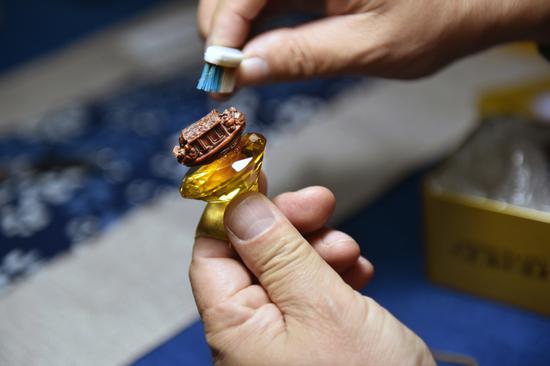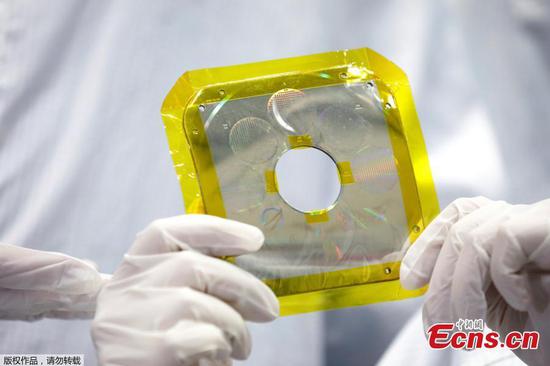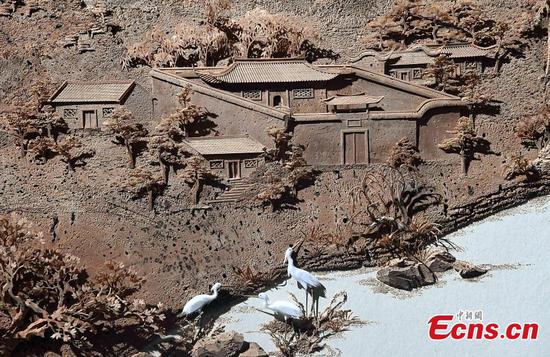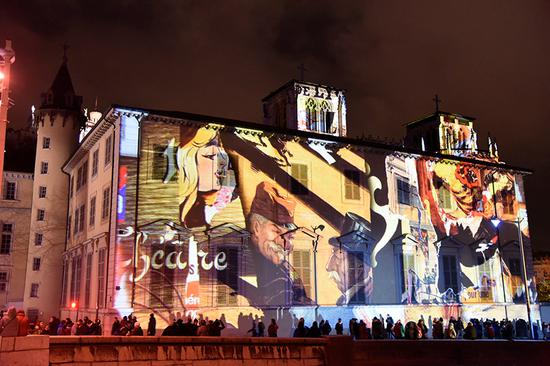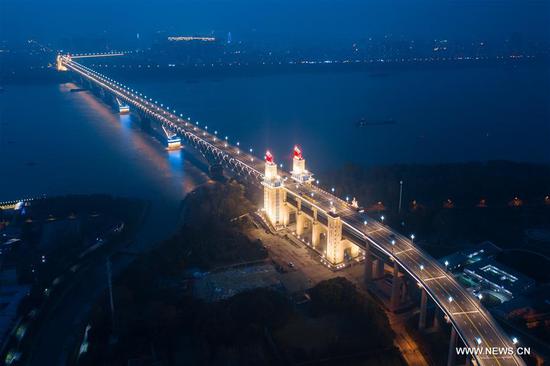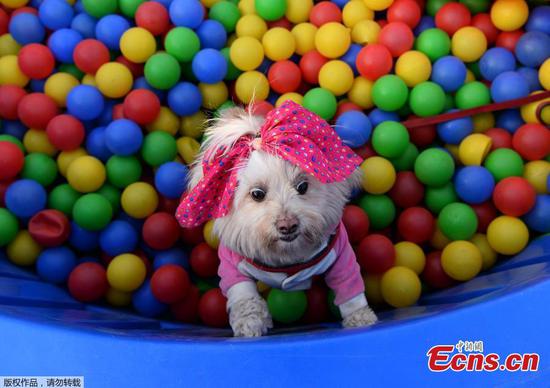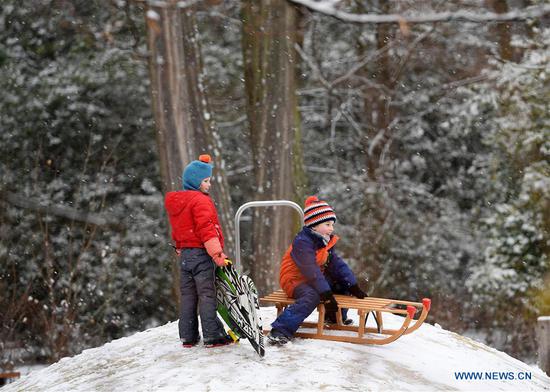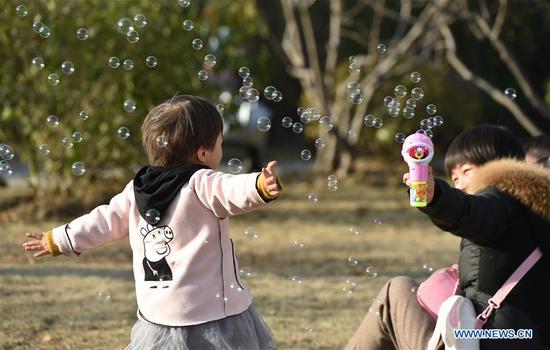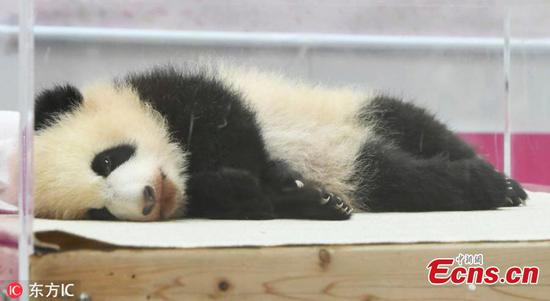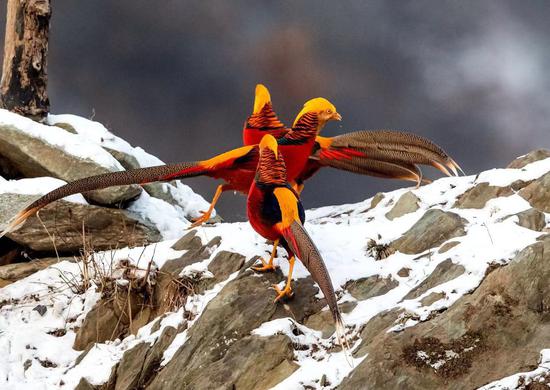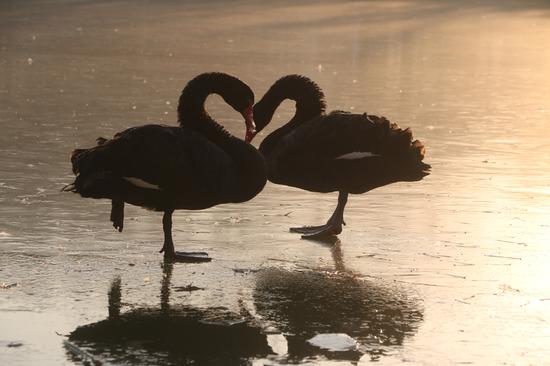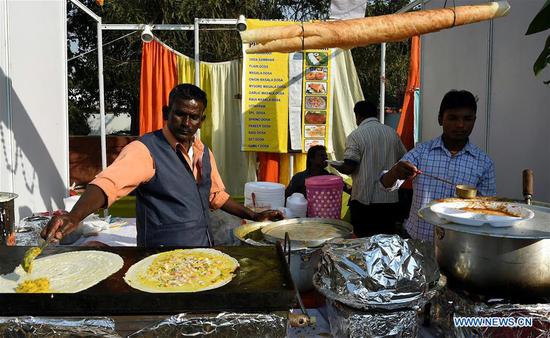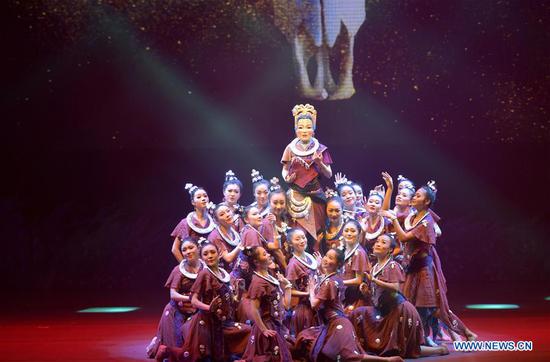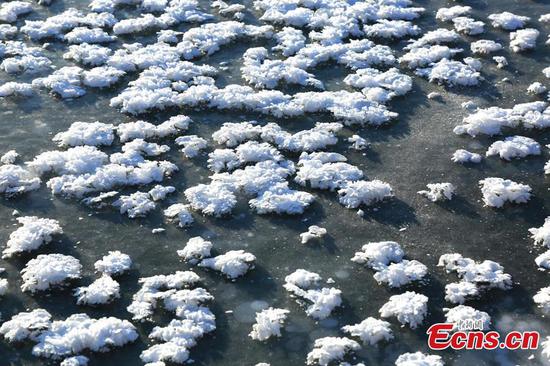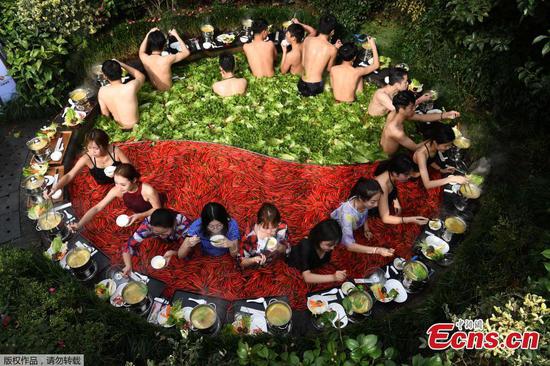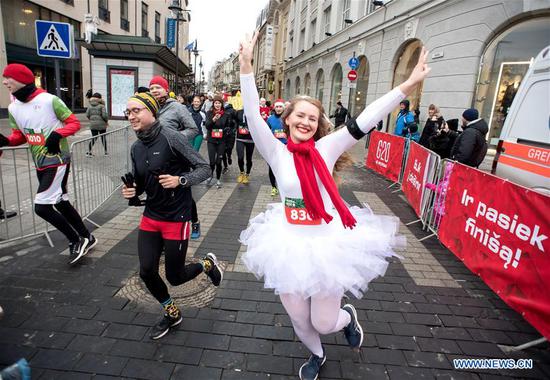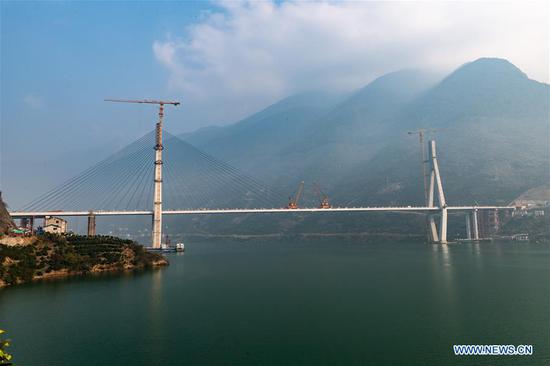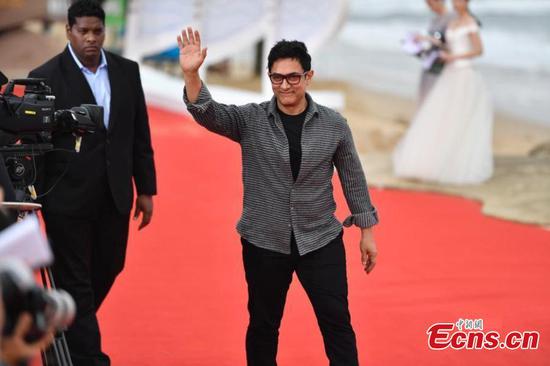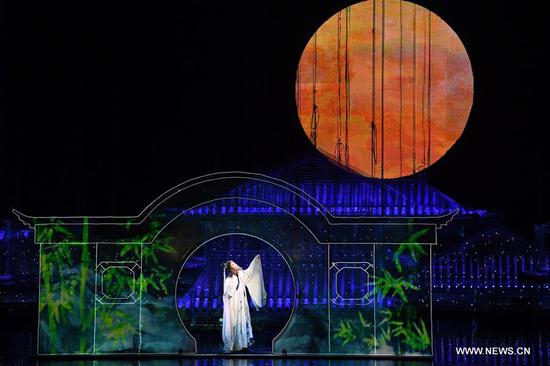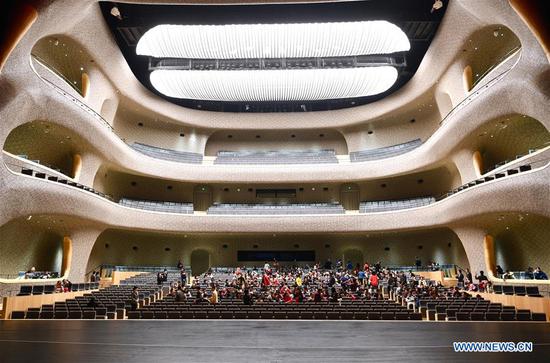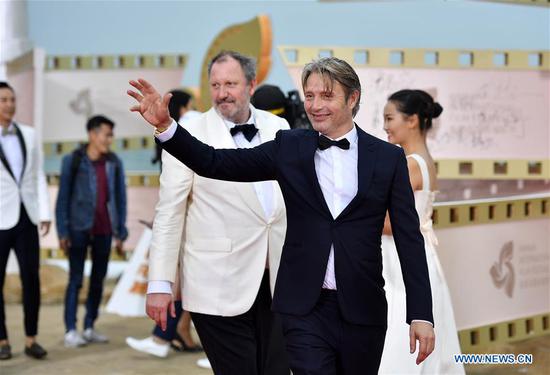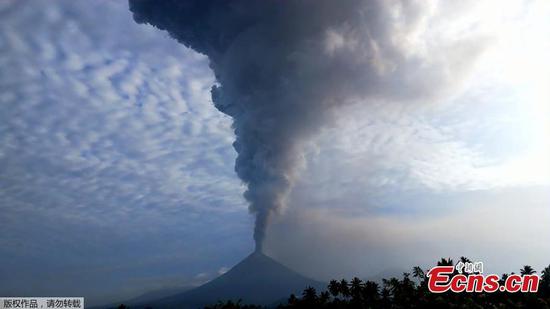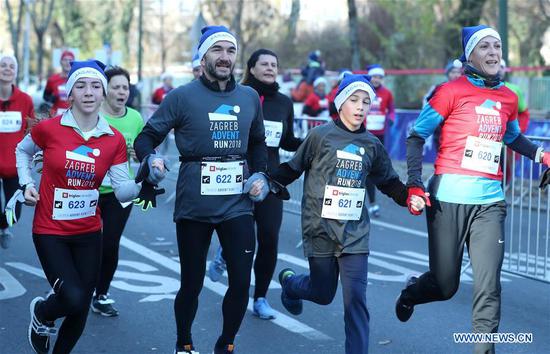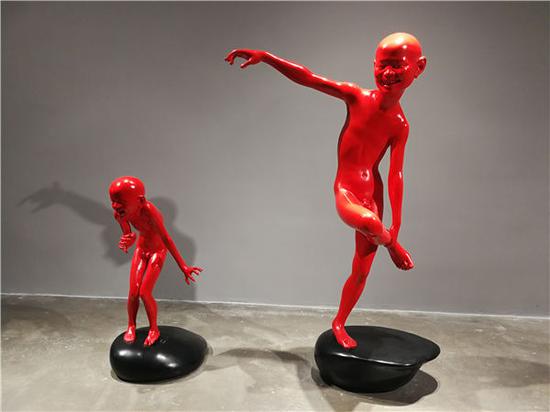
Two sculptures by Chen Wenling created in 2013, Surprise (left) and Play No 2. (Photo by Liu Xiangrui/China Daily)
An exhibition in Jingdezhen seeks to showcase works by artists born in the 1960s and the area's rich ceramics tradition.
An ongoing exhibition in Jingdezhen in East China's Jiangxi province seeks to shed light on the commonalities among Chinese artists born in the 1960s-a generation that experienced tremendous social changes, especially the reform and opening-up that took place in the prime of their lives.
The show, Facing East: Chinese Contemporary Art Exhibition on 'the 1960s', opened on Dec 8 at the Taoxichuan Art Museum of the Central Academy of Fine Arts, located on the Taoxichuan Ceramic Art Avenue in Jingdezhen, and will run through Feb 16.
The exhibition, which features several dozen works created by 20 artists belonging to this group, is sponsored by the China Central Academy of Fine Arts and the Jingdezhen Ceramic Culture Tourism Group, with help from the Shanghai New Gallery of Art.
According to the exhibition's curator, Yu Ding, who is a professor at the academy, the artists share a lot in terms of their careers.
"All the artists featured in this exhibition are in their 50s now. And they have similar backgrounds, received similar training and share similar values, though they each use a unique artistic language to express themselves," says Yu.
"They were once rebellious, trying out various methods and absorbing any influences they could find in the art of the East and the West. Now many of them are leaders in contemporary Chinese art."
According to Yu, the exhibition was first held at the China Cultural Center in Stockholm last year. And it was called Facing East because Yu believes that the world has entered a new era of shared future in which China plays an important role.
The Jingdezhen exhibition is the third stop for the show.
While the previous stops have focused on easel paintings, especially paintings on paper, in an effort to fully demonstrate to foreigners the basic elements of Chinese art-both its materials and visual thinking-the curating team has now added other art forms, such as sculptures and installations for the current exhibition to enrich the show and showcase the culture of Jing-dezhen as a center for ceramics.
Jingdezhen, which is known as China's porcelain capital, has a long history in porcelain manufacturing and has led China's porcelain industry for centuries. The town was famous for making imperial porcelain wares, and was thus given the name of a Ming Dynasty emperor.
Everything in the town highlights the influence and culture of porcelain. Many old kilns there are still in use after several hundred years, in addition to the mushrooming of ceramic workshops owned by local craftsmen and artists from all over the world.
According to Yu, the works on show in Jingdezhen break the boundaries of materials. And one instance of this is shown by Zhang Fangbai, a Beijing-based artist who held a solo exhibition at Museum Ludwig in Cologne earlier this year.
Zhang has two ink paintings at the exhibition, both entitled Pagoda.
"You can easily find traditional Chinese art elements, such as the contrast of black and white, as well as lines," he says.
Wuhan-based artist Shi Jinsong has created an installation with environmentally friendly materials to represent a pine tree, which is usually regarded as a representation of the indomitable character of the Chinese.
The artist wrapped and protected the tree with packing boxes and plastic film, creating a kind of undisturbed paradiselike space for it. Shi says he wants the work to promote reflection on the modern threats to our environment and urge people to build a world where humans and nature coexist in harmony.
Hu Ronglin, the deputy Party secretary of the Jingdezhen Ceramic Institute, says: "The exhibition offers the town's ceramic industry an opportunity to seek inspiration from the contemporary art scene of China."
The Taoxichuan Ceramic Art Avenue, where the exhibition is being held, is the old site of a famous local ceramics factory. The area, which covers 89,000 square meters, has been restored into an art zone featuring ceramics culture.









